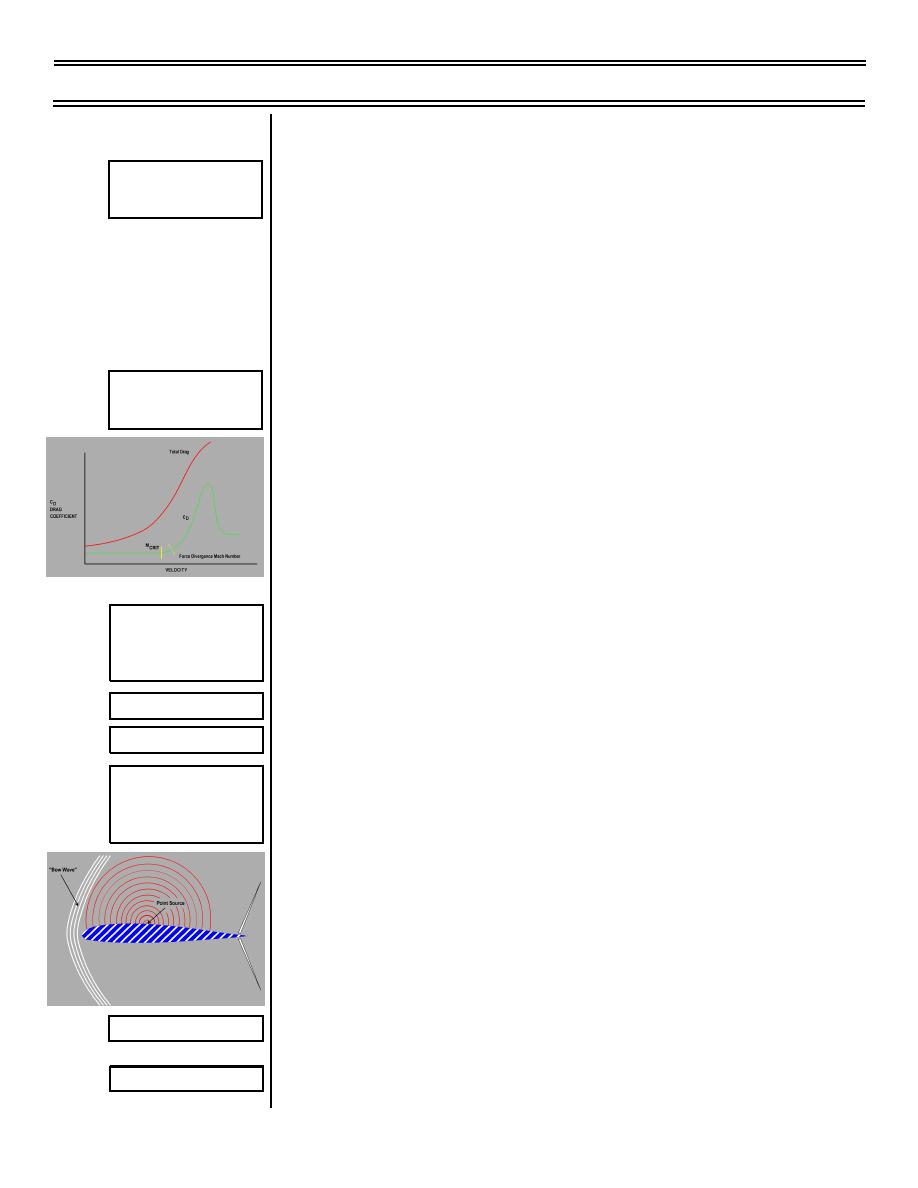 |
|||
|
|
|||
|
|
|||
| ||||||||||
|
|  T-45A/C TS, ADV & IUT Aero-02
High-Speed Flight
d.
Force divergent Mach number
Sg 1, fr 11
Fig 2: Compression
Wave Formation
(1) Approximately 5% above critical Mach
number (0.85 Mach in T-45)
(2) Pressure waves pile up to form normal
compression wave, and flow is slowed to
subsonic.
(3) Rapid rise in drag
Sg 1, fr 12
Force Divergence
(a) Due to heating of air being
Mach Number
compressed
(b) Boundary layer separation
(4) Airflow just in front of compression wave
has highest speed and lowest pressure.
NOTE: The following does not occur in
the T-45.
Sg 1, fr 13
Fig 2: Compression
5.
Waves continue to move aft and attach to the trailing
Wave Formation
edge as aircraft speed increases.
(2 Overlays)
Overlay 1
6.
Area in front of waves continues to send out
pressure warnings.
Overlay 2
7.
As aircraft speed increases, waves pile up and form
Sg 1, fr 14
a bow wave which leading edge catches up to.
Detail of Bow Wave
(2 overlays)
a.
If leading edge radius is small enough or sharp,
the bow wave will attach.
b.
If bow wave does not attach, an area of
stagnation and large drag values will occur.
c.
Until bow wave attaches, part of flow is
subsonic and aircraft remains in the transonic
flight regime; aircraft is not in supersonic flight
Overlay 1
regime until all airflow about it is supersonic.
Overlay 2
Page 2-6
(9-99) Original
|
|
Privacy Statement - Press Release - Copyright Information. - Contact Us |